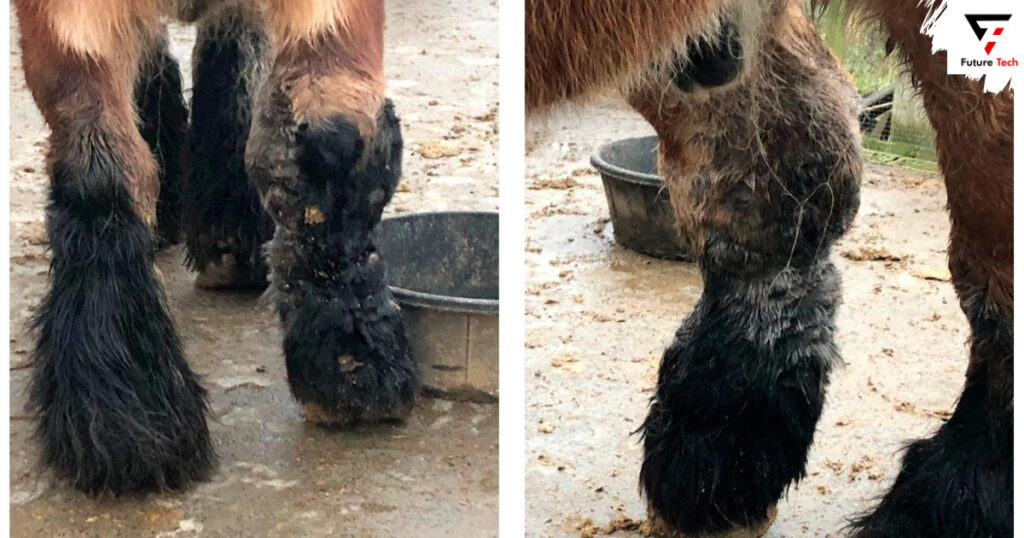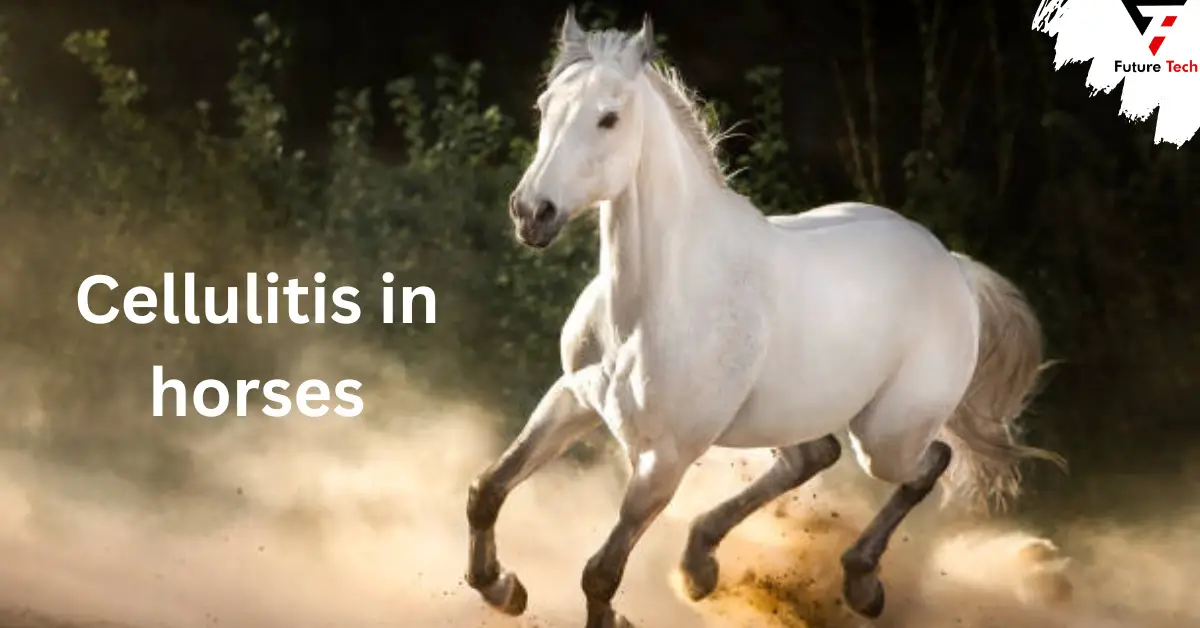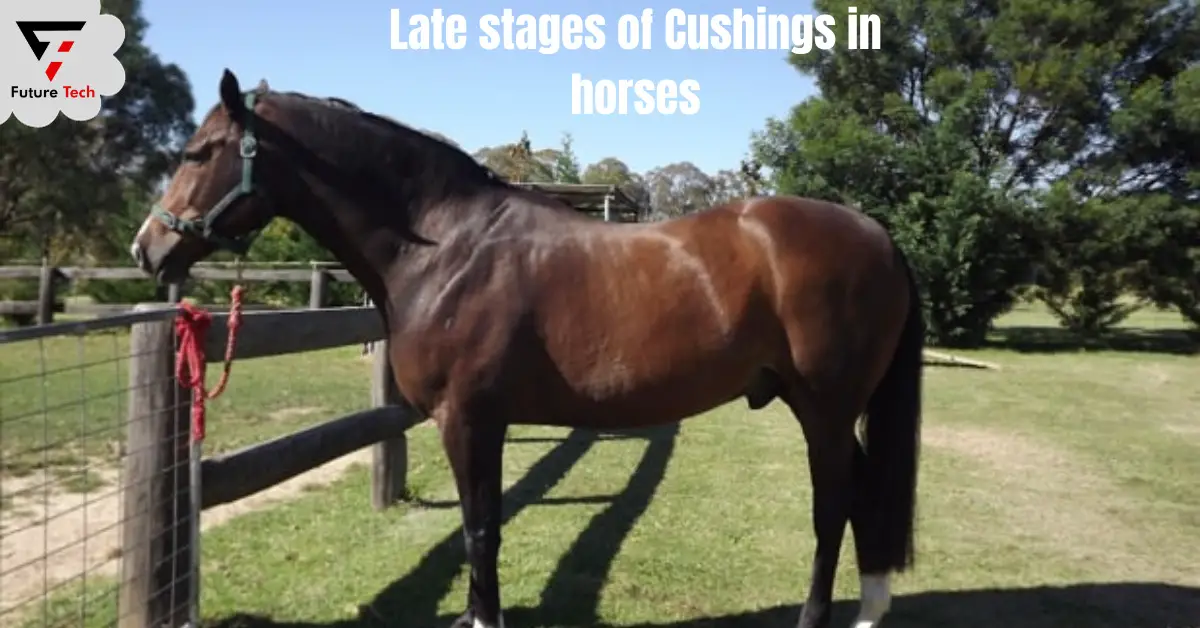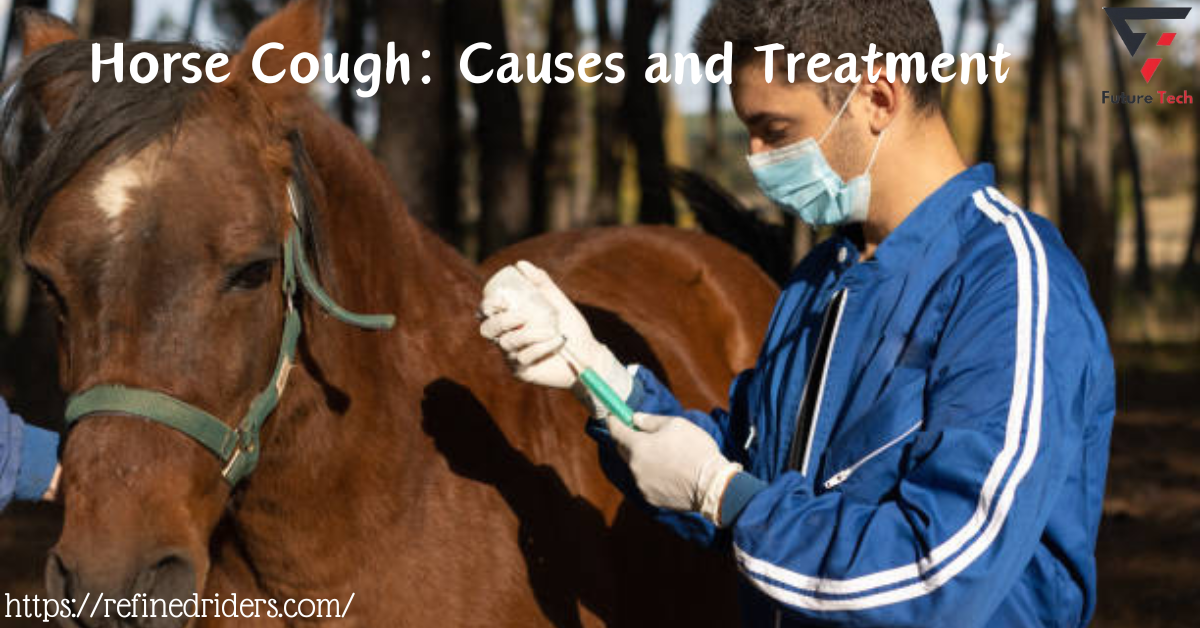Horse cellulitis is a disease requiring close monitoring by veterinarians and riders. Often brought on by a bacterial infection, this inflammatory illness affects the deeper layers of the skin and may be challenging to diagnose and cure. Horses are prone to cellulitis, which may cause swelling, discomfort, and even disability due to their delicate skin and outside exposure. Caretakers of horses must know the causes, symptoms, and preventative methods.
The introduction of cellulitis in horses explores the complexity of this illness and stresses the need for early diagnosis and adequate treatment. Given cellulitis’s substantial effects on a horse’s health and performance, it is essential to thoroughly grasp the underlying causes and symptoms to promote these fantastic creatures’ lifespan and general well-being.
What is Cellulitis in Horses?
Under the skin, cellulitis is an infection. Since horses are inherently outside animals, they are particularly vulnerable to these illnesses. Bacteria may enter the body with only a little cut or abrasion on the skin. Although cellulitis may appear wherever there is a wound, it most often affects the legs. Cellulitis often only affects one leg at a time since it seems linked to a particular skin damage or break.
Clinical Signs
Severe swelling, discomfort, heat, and impaired limb function are indicators of cellulitis. The clinical indications of affected horses may manifest quickly and range from moderate to severe.
Usually, swelling starts in one area and soon spreads to the whole leg. Alongside edema, other symptoms that may occur include:
- Ugliness
- The limb seems heated.
- Intolerance for touch
- Pitting is a bulge that, when compressed, leaves an indentation.
- Fever (higher than 38.6°C or 101.5°F)
- Depressive States
- Anorexia (insufficient hunger)
- Fast heartbeat or tachycardia
- fluid discharge and skin surface draining tracts
High levels of neutrophils, fibrinogen, and white blood cells in blood tests may indicate inflammation and infection. Within 24 to 48 hours of the commencement, discharge may begin to seep from the afflicted region. Untreated infection has the potential to cause systemic disease.
Secondary Complications
Supporting limb laminitis in the contralateral leg (the leg on the other side of the body) occurs in many afflicted horses. The opposite limb bears an unbalanced and excessive weight because of the limb with cellulitis’s inability to support weight. Regretfully, the prognosis is often inadequate for afflicted horses who develop laminitis. Horses with cellulitis may develop various secondary problems in addition to laminitis. These consist of:
- Large patches of necrotic (dead tissue) skin
- Blood-borne bacteria, or bacteremia
- Osteomyelitis, or bone inflammation
- Asthma sepsis
- Endocarditis, or heart inflammation
You must contact your veterinarian immediately if you see any cellulitis symptoms. They can provide an accurate diagnosis and start the right course of therapy.
Causes of Cellulitis in Horses
Horse cellulitis’s exact underlying etiology is still a mystery. About half of the cases progress without any discernible reason or particular catalyst. There are two forms of cellulitis: primary and secondary. Primary cellulitis doesn’t have a known underlying etiology. Although primary cellulitis seems often seen in Thoroughbred racehorses, it may affect any horse. After the horse sustains injuries to a leg, secondary cellulitis sets up, causing an infection under the skin. Joint injections, puncture wounds, and surgery are possible stressful causes of cellulitis.
Two prevalent bacterial species linked to secondary cellulitis are Streptococcus and Staphylococcus aureus. Potent toxins these bacteria produce harm the afflicted region’s skin, blood, and nerve cells. These bacterial toxins also cause a sizeable immunological response that includes white blood cells and macrophages, among other immune cell types.

These cells create cytokines, which increase blood flow to the injured location and cause swelling due to increased fluid storage. In horses, limb edema might be a risk factor for recurrent cellulitis. Every episode of cellulitis seems believed to damage the lymphatic system, which raises the possibility of further flare-ups and leaves patients with chronic edema even after therapy. Nonetheless, further investigation seems required to comprehend this connection.
Bathing Practices & Skin Health
Unsanitary equipment (such as hoses and scrapers) and poor washing habits are two further possible causes of cellulitis in racehorses. Multiple horses near cleaning equipment may spread germs that can lead to cellulitis. Maintaining appropriate cleanliness and hygiene is crucial to reducing the risk of illness. Proper biosecurity practices may also aid in reducing the spread of infection.
Bacteria may enter the subcutaneous tissue via skin problems that cause the skin to dry or crack. Exposure to muck, arid regions, and inappropriate washing and drying techniques are just a few of the variables that might cause skin diseases.
Diagnosis
A good prognosis for cellulitis depends on early identification and prompt diagnosis. The Clinician’s diagnosis of cellulitis usually depends on the horse’s clinical manifestations. To get a precise diagnosis, speaking with your veterinarian is crucial. To confirm the diagnosis and identify the cause of cellulitis, your veterinarian will examine the horse thoroughly, review its medical history, and, if required, order further diagnostic tests.
A complete blood count (CBC) to determine any abnormalities, a serum chemistry profile to assess organ function and electrolyte levels, an analysis of the bacterial culture to determine the specific bacteria causing the infection, and diagnostic imaging tests like radiography or ultrasound to determine the extent of tissue involvement and rule out other underlying conditions are some examples of diagnostic tests.
These examinations support the veterinarian in obtaining crucial data and in formulating the best course of action for the ailing equine. Avoid invasive procedures like taking synovial fluid samples from joints. These operations carry the risk of introducing germs into healthy tissue, which might result in the illness spreading.
Surgical Imaging
When diagnosing cellulitis, ultrasonography helps assess blood flow and soft tissue architecture. Ultrasound imaging may reveal the existence of gas, necrotic tissue, or deep-seated fluid build-up (edema) in the affected limb. It enables medical professionals to identify any locations that could need draining. In cases when cellulitis is causing extreme lameness and inflammation, your veterinarian may decide to take an X-ray to see whether the infection has migrated to any bones or joints.
Physiological imaging using flow-phase scintigraphy allows examination of the whole horse rather than just a tiny portion. It may determine excessive soft-tissue inflammation and lesions and evaluate blood flow. Because scintigraphy does not require applying external pressure to the afflicted limb, many horses with cellulitis tolerate it better than ultrasonography or radiography. For many horses with cellulitis, scintigraphy is a well-tolerated choice since it does not require exerting external pressure on the afflicted leg, unlike radiography or ultrasound. This imaging technique provides insightful information for condition monitoring.
Treatment
Treatment goals are managing the infection, reducing inflammation, and stopping new infections. Your veterinarian may do an ultrasonography on the leg to check for fluid pockets or foreign objects. They may open the skin or wound to facilitate drainage, essential for any wound, necrotic or infected region, or abscess. If required, they may also debride (remove damaged tissue) and lavage (flush) the area. Anti-inflammatories that aren’t steroids, such as flunixin meglumine or phenylbutazone, are what your horse needs. Although it’s not always feasible, your veterinarian may also gather a culture or utilize a Gram stain in case of a noticeable incision, fluid pocket, or drainage to choose the best antibiotic.
Veterinarians may provide diuretics or steroids in severe situations. Pentoxifylline can improve blood flow. If the affected limb continues to feel hot and painful, try hydrotherapy. Moving around is suitable for the horse, even if it’s often not feasible during the acute period. The relaxation and stretching of the muscular tendon unit help promote lymphatic resorption and outflow. If your horse will allow it, you may use a bandage or a sweat, depending on the pace and severity of advancement. Monitor the bandage to ensure it doesn’t become too tight. A chronically swollen limb might result from persistent cellulitis lasting more than a week.
Healing and Handling Cellulitis in Horses
Most cellulitis patients fully respond to antibiotics. However, after an infection, the subcutaneous tissue seems disrupted. It indicates a higher risk of cellulitis recurrence in the limb, necessitating more attention to wound care and hygiene. Rarely, a horse may develop treatment resistance if the same leg has repeatedly had cellulitis. Euthanasia could be the only practical way to end these horses’ excruciating anguish because of their ongoing suffering.
In the first place, preventing cellulitis is the most excellent treatment approach.
- No matter how little the cracks in the skin, keep them dry and clean.
- Think about covering up injuries on limbs with bandages until they recover fully.
- Maintain the paddock and stable spaces dry and clean.
- Dry your horse completely after washing or training.
Conclusion:
To sum up, cellulitis in horses is a severe condition that has to be treated promptly since it might affect the health and performance of the animal. Horse caregivers need to understand the origins, symptoms, and preventative strategies. Timely diagnosis and suitable therapy are essential in managing this inflammatory illness. The severe cellulitis consequences, such as laminitis and associated sequelae, highlight the need for prompt diagnosis and treatment. Horse owners may improve the health and lifespan of their horses by emphasizing wound care, sanitation, and early identification. To navigate the complications of cellulitis and provide the best possible health for these fantastic animals, vets and caregivers must work together.




